Japan December travel overview: season, food, nature, events
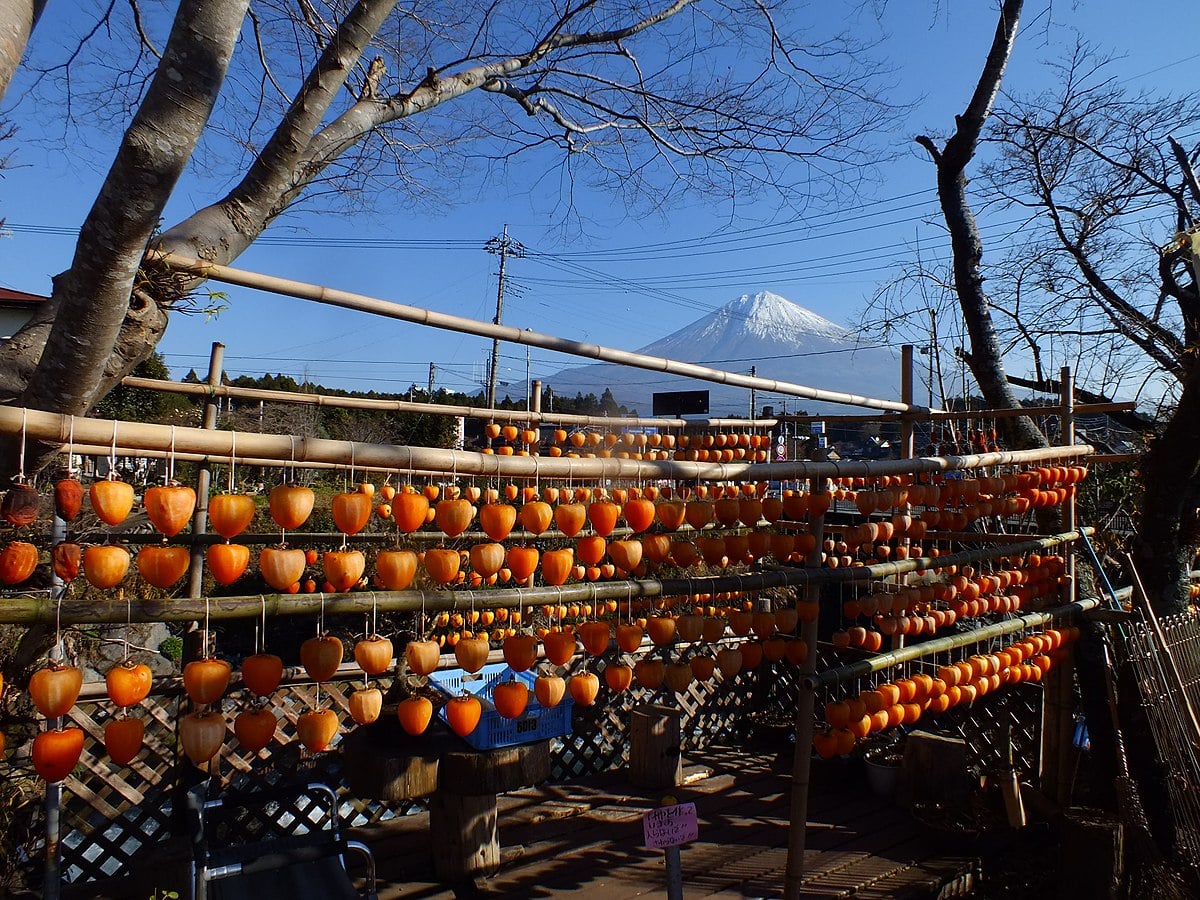
Japan travel in December is excellent for all the right reasons. The mega-crowds of maple leaf season vanish in early December. December is the start of winter in Japan but is for the most part a much milder month than January or February. Early December can still be a fantastic time to see maple leaves, especially as global warming often lengthens momiji season. I have heard cicadas as late as mid-December in Kyoto! When snow falls in December it is usually later in the month with fluffy snow that is beautiful but only lasts for a few days at a time.
The big Japanese cities of Tokyo, Osaka, Kyoto, and Fukuoka have average December highs of about 12° C (54° F), and lows of roughly 5° C (41° F). In the mountains of Japan, the temperatures are considerably lower, and up in Hokkaido it's full-on winter. This is great for skiing and both the Japanese Alps region and Hokkaido are the favored destinations for snow sports and truly amazing snowy scenes.
Despite the cold, December (right through to February) is a season of sunshine on most days. Dress in layers and if you have a down jacket all the better. And don't forget the right shoes: not too heavy and worn with thick socks.
Travel in December in Japan is a low season period, and you will encounter few crowds anywhere you go. The exception would be on weekends near big cities, especially for skiing and snow sports destinations. However, the last days of December can be very busy on the bullet trains linking Tokyo to Kyoto as many return to their hometowns and countless "modern" Japanese domestic tourists visit Kyoto and other key relaxation and culture spots.
Since the late 1990s, "New Year" shopping has become increasingly popular so the three days (Jan 1, 2, 3) where everything is closed is less and less obvious. The exception here would be booking good restaurants in Kyoto from December 29-31 . . . We have solutions and strategies for all this so just ask!
On the traditional culture calendar, December is quite unique. During the first 3 weeks of the month bonenkai office, university and government worker parties are happening everywhere you look. These are pretty big parties (12-25 people), and they can sometimes "swamp" the place you were hoping to eat at, so book ahead or look for smaller, more intimate venues. Towards the very end of the month, travelers can look forward to "seeing" O-soji or the big cleaning of homes and business in preparation for the New Year. The other really fun thing to see and to do is making mochi by pounding rice in huge wooden "bowls" with really big wooden sledgehammers. Fun for the kids for sure! And possibly fun to experience as an adult as well!
Japanese New Year is unlike anywhere else on the planet because the last day of December is Buddhist, when temples ring out the "old year," while the first three days of January are dedicated to Shinto and the "new year."
In the Japanese tea ceremony, the month of December has been poetically captured with “goma” associations that capture the essence of each 10-day period: early December , mid-December , late December . These key words and themes that have been classically repeated in Japan for more than 1,200 years. The December goma key words can help you “imagine” what to expect when you travel in Japan in that month. Early December themes: Suisen narcissus flowers; Kangiku winter chrysanthemums; Seibo year-end gift giving. Mid-December themes: Irori charcoal fired hearths; Fuyu Kodachi barren winter trees; Fuyuno winter fields; Yuki no Asa snowy mornings. Late December themes: Joya no Kane end-of-the-year Buddhist temple bell ringing (108 times); Toshi Koshi, crossing over from the old to the new year.
Other interesting December Japan travel themes include kagami mochi (flat mirror shaped rice cakes), camellias, fallen leaves, mandarin oranges, mizudori (ducks with their heads tucked under their wings), bare trees, and chilly winter winds.
- Japan winter (Dec-Feb) travel food highlights
- Japan December travel tree and flower highlights
- Japan December travel festival | event highlights
- Ringing out the Old Year with bonsho bells
- Hibachi: Traditional warming Japanese charcoal braziers
- Millennium Interview: Head priestess of Kurama-dera Temple
Content by Ian Martin Ropke, owner of Your Japan Private Tours (est. 1990). I have been planning, designing, and making custom Japan private tours on all five Japanese islands since the early 1990s. I work closely with Japan private tour clients and have worked for all kinds of families, companies, and individuals since 1990. Clients find me mostly via organic search, and I advertise my custom Japan private tours & travel services on www.japan-guide.com, which has the best all-Japan English content & maps in Japan! If you are going to Japan and you understand the advantages of private travel, consider my services for your next trip. And thank you for reading my content. I, Ian Martin Ropke (unique on Google Search), am also a serious nonfiction and fiction writer, a startup founder (NexussPlus.com), and a spiritual wood sculptor. Learn more!
Japan winter (Dec-Feb) travel food highlights
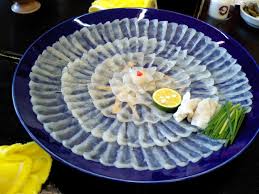
Amazake and shiruko | zenzai winter sweet soup “drinks”: All three are sweet winter soups or “drinks,” and they’ll surely warm you up! Amazake: Amazake is made with the lees leftover from the sake brewing process, ginger and sugar. It is milky and a slight alcohol flavor. Amazake is often offered at winter rituals and ceremonies at temples and shrines. After drinking it you can immediately feel your body warming up. Shiruko | zenzai: Shiruko is a traditional Japanese dessert. It is a sweet porridge of azuki beans boiled and crushed, served in a bowl with mochi rice cakes. There are two types of shiruko: one made with bean paste and the other with whole or crushed beans. Zenzai, a similar dish, is made from condensed heated bean paste making it less watery than shiruko. In Western Japan, zenzai is generally used to refer to shiruko and in Tokyo shiruko is what to ask for . . . For the truly modern both zenzai or shiruko is on many hot drink machine menus and also in heated cases in most convenience stores.
Fugu blowfish: Fugu blowfish (also pufferfish) has a reputation for danger, but the danger lies in the chef (they must be highly trained to avoid cutting the fish’s internal organs) so only try this fish in places with excellent reputations and this also means paying top dollar. This almost see-through fish flesh is served thinly sliced with yuzu (or sudachi) citrus slices. Fugu can be enjoyed year-round, but the winter catch is the best of the year!
Hoshigaki dried kaki persimmon fruit: Kaki persimmon fruit decorate late autumn trees when all the leaves have fallen and are a favorite photographic them in November. Many are picked and hung up under the eaves of country homes to soak up the sun and get sweeter and sweeter. These are hoshigaki a special type of dried persimmon loved for its rich, caramelized sweetness. Although hoshigaki are a kind of delicacy today, they are well worth trying. They’re a great thing to have on a cold winter day walk. Japanese people first started drying kaki persimmons in the the Heian Period (794-1185 AD). The hazy white coating on hoshigaki is sugar (not mold!) that comes out of the fruit when it's exposed to sunshine! You can buy them in all good supermarkets, but the very best kaki persimmons are on sale in old-style fruit shops in markets and also in the gourmet section of big department stores.
Kuro mame black beans: The shiny, slightly sweet black soybeans known as kuromame are always part of the Japanese osechi ryori family moment (traditional New Year’s meals that are still meticulously prepared in advance to be eaten on Jan 1, 2, 3). But black kuromame beans are something old families regularly buy and use as a healthy side dish at home and thus the reason they are so prized during the first meals of the new year. Believe it or not, to add iron as a “supplement” black beans are made with a rusty nail or two, which is said to make them so very black! Kuromame are rich in protein, vitamin B and E, and calcium, and are said to be beneficial for blood circulation. Some of Japan’s finest kuromame are the black soybeans (kurodaizu) from Kyoto’s Tamba region, which have been cultivated for over 400 years. The specialty food shop on the east side of Kawaramachi, just north of Shijo always has a truly huge carved wooden bowl of Tamba kuromame displayed in the front window. Shops in the basement gourmet sections of all high-end department stores anywhere in the country also display and sell them.
Mikan mandarin oranges: One of the great things about winter in Japan is the abundance of native citrus fruits, including yuzu but especially mikan mandarins. These seedless mandarins are everywhere you look. And the closer you are to where they come from, the cheaper they are. Mikan are produced in abundance in Wakayama Prefecture, just south of Osaka, and in many places on the island of Shikoku. But you will find them everywhere you go in supermarkets and department store gourmet basements. Perfect for the end of the day or a juicy satisfying snack on your travels across Japan!
Mochi: Mochi rice cakes may not seem like much but for the Japanese they are absolutely special. And though consumed mostly in winter, making mochi is a great way to understand the Japanese passion for mochi rice cakes. Mochi pounding events are held all over Japan in the last two weeks of December. Kagami mochi are an extremely popular form of traditional Japanese New Year decoration and they are widely on sale in the last week of December and thus easy to "experience." The kagami mochi arrangement usually consists of pyramid like stack of mochi rice cakes with a daidai Japanese bitter orange and leave at the top of the stack. Kagami mochi first appeared in the Muromachi period (1336-1573). Traditionally kagami mochi was placed in various locations in traditional homes. Today, these arrangements are usually placed in the household kitchen Shinto shrine (kamidana) and in tokonoma (decorated raised alcove in the main room and main bedroom).
Nabe or nabemono hotpot cuisine (including sukiyaki, shabu shabu, chanko): A general term meaning “ hot pot, nabe covers a whole range of delicious dishes that are stews or soups cooked in an iron or clay pot. Nabe cuisine is especially popular in the winter months and covers a few different types including vegetarian options . . . And nabe experiences are not cheap! It is a full meal experience that often includes sitting at horikotatsu (sunken floor tables) and the finest ingredients available at the fresh food markets. Sukiyaki: marbled beef: Sukiyaki consists of thin slices of marbled beef, vegetables, and tofu cooked in a mixture of soy sauce and sake. When cooked, the ingredients are dipped in a small dish of raw egg; don’t worry, the egg coating cooks instantly. Shabu-shabu: fine beef: Shabu-shabu contains paper-thin slices of the finest beef and vegetables briefly cooked in a clear broth and then dipped into ponzu (a vinegar-based dip, usually used for vegetables) or gomadare (made from sesame paste, for dipping meat into). Chanko nabe: sumo wrestler food: Chanko nabe is a style of nabemono popular among sumo wrestlers, and can pretty much include anything: vegetables, yudofu (a kind of tofu), fish, shrimp, and chicken.
Nikujaga: The first Japanese nikujaga (which translates as “meat and potatoes” was based on European beef stews and began to be popular in the 1870s when eating animal meat (as opposed to fish) first took off because Buddhist views and Buddhism fell out of primary place which was taken over by the original Shinto animist religion). In a way nikujaga is a form of curry without the curry. The common nikujaga mix includes potatoes, carrots, and onion, and meat slow-cooked in a mixture of water, sake, dashi and soy sauce. In western Japan (Kansai region: Kyoto, Osaka), beef is typically used for nikujaga. In eastern Japan (Kanto; Tokyo, Yokohama), pork is favored.
Oden: For those who find nabe prices (see above) a bit steep, Japan has a winter food option that is just as much fun, and much cheaper! A big winter food favorite (and now available in most convenience stores in metal vats, ready to eat), oden consists of a big pot of clear broth in which you will find daikon radishes, potatoes, turnips, konnyaku, tofu, yuba, boiled eggs (tamago), fish cakes (satsuma-age), and octopus legs (tako). It’s also a late-night food that can be sampled in semi-outdoor settings. To order, simply point your finger, or name the item and add “kudasai” (please). Add a little bit of sinus-clearing karashi mustard, and you’ve got all you need to stay warm for the entire evening. Kyoto special ingredients include ebiimo (a special kind of Kyoto potato), shogoin daikon (a kind of local round white radish), hirousu (super-fine tofu), and yuba (bean curd whey). For a classic, easy-to-find oden shop, head to Douraku in Kyoto. Founded in 1920, they start cooking more than 26 ingredients every morning in kelp broth and soy sauce. Open 17:00-22:00. Located on Kawabata, south of Shijo, near the Minamiza theater. In Tokyo, these three oden places are excellent: Samon (Nakameguro): Hailing from Nagoya, Samon Nakameguro beckons with an eye-catching huge “outdoor” oden pot outside. Samon oden stock is made from simmered chicken and vegetables; Ajifuku Asano (Hiroo): Located around the corner from many embassies humble Asano, hidden away from the action serves outstanding Kyoto-style oden; Otafuku (Asakusa): This old and historical restaurant, with hanging paper lanterns and a well-maintained garden, has been in business since the late 19th century.
Okayu and zosui porridges: Okayu and zosui are two kinds of Japanese porridge. They are often breakfast items (especially in ryokan inns and hotels that cater to senior citizens) but can also be enjoyed at other times of the day in traditional restaurants with deep menus in deep winter and early spring. With okayu, a rich protein and vegetable porridge, chopped negi onions, soya sauce, and pickled umeboshi plums are usually added as toppings. Zosui is similar but if often made from nabe hot pot leftovers in a home setting and also in traditional restaurant settings as a way to end the meal with rice and thus porridge. Almost every restaurant that serves nabe-mono offers to make zosui as the final course.
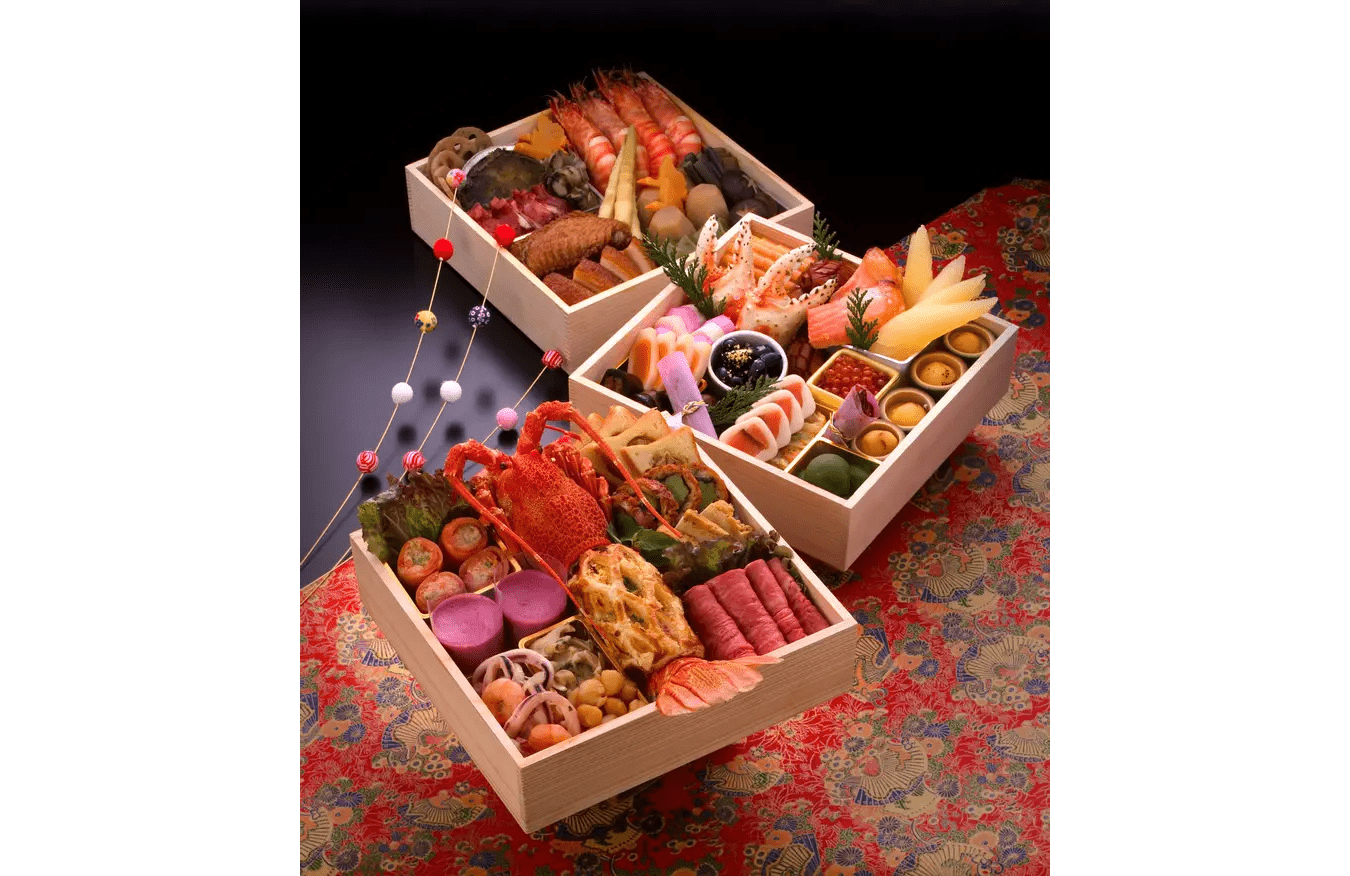
Osechi ryori: The main dishes of the traditional osechi New Year’s tray, prepared with much hard work by the women of the house, are symbolic. Herring roe symbolize fertility. Shrimp, with their bent back, the chance to live a long life, until our own backs bend. The many-holed lotus root symbolizes premonition, or the ability to see through to the “other side.” Black beans are for hard work. And kelp stands for happiness and delight. Pink and white (auspicious colors in Japan) kamaboko (processed fish paste) are also part of the osechi tray. Some, when sliced, reveal a picture of Mt. Fuji, sunrise, cranes or bamboo leaves, all symbols of happiness. Vegetables are cut to resemble plums (happiness), chrysanthemums (longevity) or pinecones (prosperity). These three plants are also arranged on either side of the house gate during the first days of the Japanese New Year. Though many still take the time to prepare their own osechi ryori at the year's end, even the rarest New Year foods can now be bought at department stores (gourmet basements!) and specialty shops. And this is a great chance for tourists to see, experience and taste these famous and hard-to-make dishes. In late December, Kyoto housewives go to Nishiki-koji street, known as "Kyoto's Pantry" (one block north of Shijo street). Here, they search for foods, artistically-cut vegetables and decorations for the New Year's dinner. In Tokyo, just go to the best department stores during the final week of the year and see all kinds of osechi on display and for sale . . .
Strawberries: While they might say summer to most people, even in Japan, there are also the “super strawberries” of winter. The Kyushu strawberry crop consists of mostly giant strawberries that are still super popular on the menus in 5-star hotels across southeast Asia but also in Japan if you know where to look. The smart way to find them is to go to the gourmet basement levels of top department stores and find the fruit sellers. These enormous strawberries may not be cheap, but the flavor and size make up for it as does the luxury of summer fruit in winter.
Toshikoshi soba, end-of-year noodles: On New Year’s Eve, many Japanese people, on their way to the temple, eat toshikoshi soba: the soba that will “carry you over into the New Year.” Soba noodles are believed to help you have a longer life, and also to help you keep your money longer! In Kyoto, Tokyo, Osaka and other major centers, many soba noodle shops remain open right into the New Year (i.e., after midnight!).
Yakiimo: Yakiimo or roasted sweet potatoes are popular in the winter months. These potatoes, almost all from Hokkaido, have a reddish skin, and are roasted slowly at low temperatures until the center becomes tender. In many traditional Kyoto neighborhoods, you can hear the distinctive recording of the yakiimo sellers as they drive by. They are typically sold in front of grocery shops and by street vendors who drive around town, roasting them in the back of their truck.
Yuzu citrus wonder flavor: A type of citrus fruit that is used for everything from cooking to bathing, yuzu are not so easy to spot. The tree has small white flowers (blooms in summer), and sharp, tough thorns all along its branches. Deep lemon yellow-skinned yuzu were introduced from China in the 8th century. The aroma of yuzu is considered to have strong calming qualities. Taking a yuzu bath is good for your skin and overall health, as well as being able to increase your chances of getting wealthy (or so the belief goes)! And the flavor is so special that more than a few American companies have tried to synthesize it! Many people continue to follow the ancient tradition of taking a yuzu bath on the shortest day of the year (Dec. 21; the winter solstice). The village of Mizuno, located on the terraced backside of Mount Atago (Kyoto’s highest mountain on the west side) has a large number of yuzu orchards. In Mizuno the yuzu are used to make honey (from the flowers of course), flavor white miso used in the local nabe cuisine, and in the bath. Check it out by either hiking up Mount Atago from Kiyotaki to Mizuno, and then down to Hozukyo. A yuzu bath experience, including a full sukiyaki chicken course, sells for about Yen 5,000/person (minimum of 4 people; reservations required).
- Japan winter (Dec-Feb) travel food highlights
- Japan December travel tree and flower highlights
- Japan December travel festival | event highlights
- Ringing out the Old Year with bonsho bells
- Hibachi: Traditional warming Japanese charcoal braziers
- Millennium Interview: Head priestess of Kurama-dera Temple
Japan December travel tree and flower highlights
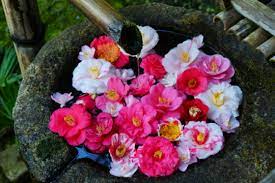
December is not the best season for flower viewing but it’s also not the worst. Every year, as climate change advances, November flowers bloom later, and December flowers bloom brighter. The two big December flower attractions are suisen narcissus daffodil flowers and camellia flowers.
Suisen narcissus daffodils: Suisen are a hardy plant and bloom right in the heart of winter: from late December to early February. And their fragrance is noticeable! The flowers’ lovely white petals, bright yellow stamens, and dark green leaves stand out for all the right reasons. Do look for them! Kansai (Kyoto | Osaka region): The south side of Awaji Island (next to Osaka | Kobe) is famous for suisen, and they bloom here, naturally and in a huge flower park. Kanto (Tokyo region): Jogashima Park; Tsumekisaki Park; Taura Bairin; Ezuki Narcissus Road; Daffodil festival at Kasai Park.
Camellia flowers: There are more than a few camellia species in Japan, and they are especially common in the “wild” and within the precincts of Zen temples and also Pure Land sect temples. These are the yabutsubaki (wild type) and sazanka camellias famous for their cascade of red flowers from mid-December to late March. Ornamental camellia cultivation began in the Edo period (1600-1868), and more than 200 hybrid varieties were on record by 1695, in whites, pinks and dark reds. The yabutsubaki grows to height of about 10 meters (30 feet) and has very smooth greyish bark. The leaves are glossy, pointed at the end and alternate along the branch from side to side. The flowers are usually a rich red, with the petals tightly enfolded at the base. Sazanka are similar to the yabutsubaki, except that the flowers are generally white in the wild; however, in ornamentals the blossoms are often red. Sazanaka leaves are also shiny and evergreen year-round but are elliptical and have serrated edges. The petals are also more open and not tightly attached to each other at the base of the flower.
Camellia wood is very hard and since ancient times has been very popular for making tool handles. The oil, pressed from the tree’s round seeds, was widely used for cooking and as hair oil (still considered the finest natural hair oil).
A nephew of Japan’s famous shogun, Tokugawa Ieyasu (founder of the Tokugawa shogunate: 1603-1867) ordered a painter to paint a 24-meter (72-feet) long scroll called “One Hundred Camellias” in 1635. The scroll depicts a variety of flowers arranged in flower vases, bowls, and baskets. Forty-nine important cultural figures, including lords, poets, scholars, monks, wrote poems in the margin of the scroll. The scroll is part of the permanent collection at Tokyo’s stunning Nezu Museum complex.
- Japan winter (Dec-Feb) travel food highlights
- Japan December travel tree and flower highlights
- Japan December travel festival | event highlights
- Ringing out the Old Year with bonsho bells
- Hibachi: Traditional warming Japanese charcoal braziers
- Millennium Interview: Head priestess of Kurama-dera Temple
Japan December travel festival | event highlights
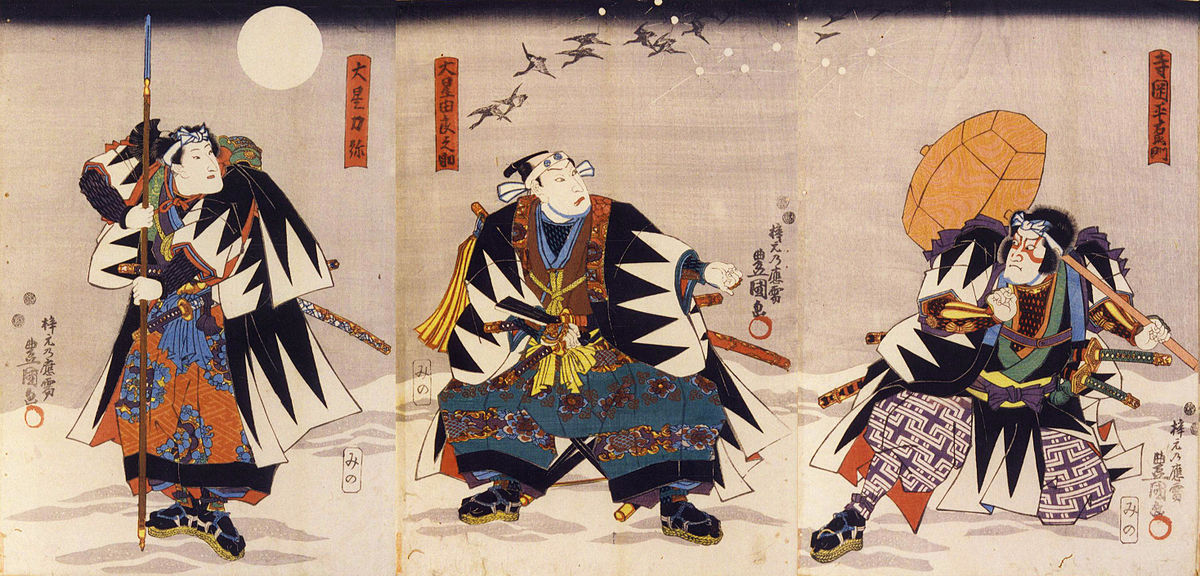
Chichibu Night Festival (early Dec; Chichibu City, near Tokyo): A colorful nighttime celebration in Chichibu City featuring large floats, mikoshi and a spectacular winter hanabi fireworks display.
Kasuga Wakamiya Festival (Dec 15-18; Nara): A festival featuring a parade of about 500 people in Heian-era clothing with traditional music. Founded more than 800 years ago, the festival is authentic and lively. Although the Kasuga Wakamiya spans four days, the main event is on the 17th and is centered around Nara’s impressive Kasuga Taisha shrine complex.
Kaomise Kabuki at the Minamiza (until 12/26; Kyoto): Near Kyoto’s Minamiza Theater stands a statue of Izumo Okuni, the woman who created the kabuki theater form in1603. When she arrived in the capital she found a lively street performance scene: performers wore colorful clothing and played their instruments the way rock stars do today. This inspired, her wild, often outrageous dance performances on the banks of the Kamogawa River, which quickly became popular. Today, strange as it may seem, kabuki is only performed in Kyoto in December during Kaomise (lit. actor’s face showing). The event started in about 1660 as a way to get publicity for star kabuki actors at the end of the season. Kyoto’s Kaomise features two long performances (10.30 - 16.00; and 16.30 - 21.30), but no one expects you to sit and be quiet through all the performances. Relax! Watch what catches your eye (a lot will), sample the noodles and sake in the lobby, marvel at the costumes, and watch the fast set changes and brilliance of the set designs. Tickets: Yen 5,000-25,000. Reservations necessary but usually easy enough later in the month.
Japanese New Year’s Eve (12/31): Joya no kane is the name of the Japanese bell-ringing ritual which brings the old year to an end and ushers in the new. Giant temple bells, called bonsho, one for each temple, usually made of copper, are struck with a large, swinging beam at a spot encircled by a design of lotus petals. Bonsho are struck 108 times on New Year's Eve to purge humankind of the 108 Buddhist sins. If you wish to ring the bell, then start lining up at around 23:00. Some temples may require for you to make a reservation to get a ticket (seiriken) for the bell ringing, which is always very popular. And please remember that joya no kane is a religious occasion. Drunken behavior and shouts of "Happy New Year!" will not be appreciated!
Daruma Dolls at Horin-ji Temple (Kyoto): One of Japan's most familiar icons is a wobbly black, red and white doll, called Daruma. And Daruma dolls are also used to make New Year’s vows. Most Daruma are made from papier-mâché and have large, empty circles where their eyes should be. To make a vow you paint in one eye and when the goal becomes true the other eye is painted in. Daruma is the Japanese name for the Bodhidarma, the founder of Zen Buddhism. Born into an Indian family of high caste in 470 AD, legend has it that, at well over a hundred years old he spent three years journeying to China on a leaf "for no reason." In Kyoto, one block north from Enmachi (the intersection of Nishioji and Marutamachi), you will find a Daruma doll fixed to the wall on your right; 50 meters east lies Horin-ji Temple, popularly known as "Daruma Dera." Founded in 1718, Horinji houses an international collection of over 8,000 Daruma dolls in all shapes and sizes and is the headquarters of the Japan Daruma Group.
Christmas super illumination events: Christmas may not be a holiday in Japan, but the country has long been in love with European Xmas light displays. Kobe’s Illumination was a primary first for these light up shows. Tokyo and other large Japanese cities all have elaborate Christmas light displays that are worth checking out!
- Japan winter (Dec-Feb) travel food highlights
- Japan December travel tree and flower highlights
- Japan December travel festival | event highlights
- Ringing out the Old Year with bonsho bells
- Hibachi: Traditional warming Japanese charcoal braziers
- Millennium Interview: Head priestess of Kurama-dera Temple
Ringing out the Old Year with bonsho bells
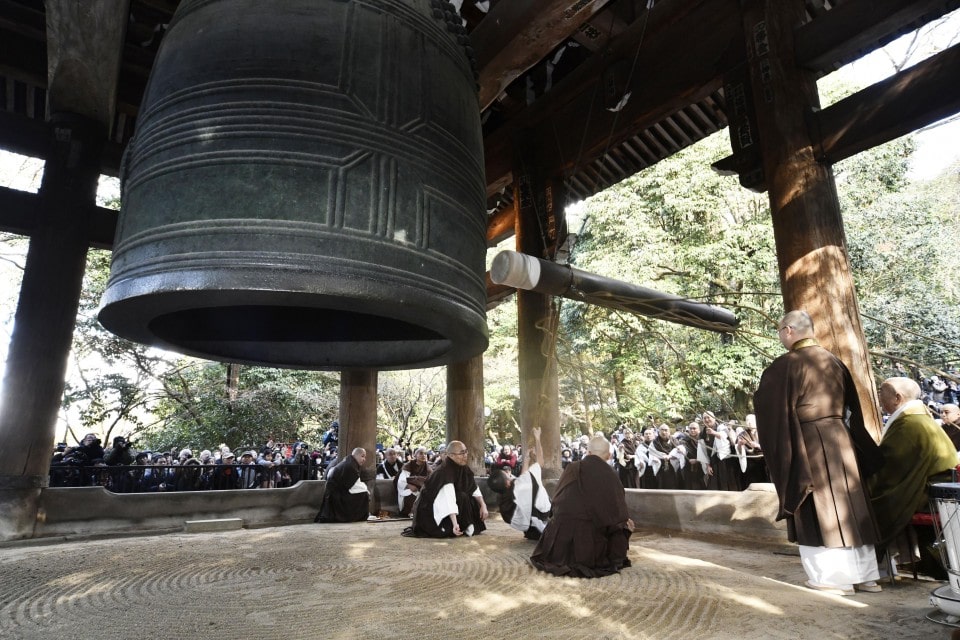
Bonshō (Buddhist bells), also known as tsurigane (hanging bells) or ōgane (great bells) are large bells found in Buddhist temples throughout Japan. And these giant bells still mark time in traditional settings, especially in Kyoto. But their most famous moment comes when the Old Year is rung out with 108 rings . . .
They are usually made of copper and instead of having a clapper, are struck with a heavy, swinging beam. Around the top of the bells there is a belt with 108 raised bosses representing the 108 evil desires that man is heir to. The bells are struck 108 times on New Year's Eve to purge man of these desires and give him a chance to start the New Year with a clean slate.
On the majority of temple bells there is an inscription reading “Namu Amida Butsu,” a prayer to the Buddha who rules over the Western Paradise. He made 48 promises to man, the eighth of which was that if you recite his name sincerely, you will be met at death and guided straight to Paradise.
In and around Kyoto you can see many of the most famous bonsho in Japan. The bell at Jingo-ji Temple is notable for its beautiful inscription, but the inscription on the bell at Hoko-ji is the most famous. In 1600, Tokugawa Ieyasu used it as a pretext to attack Osaka Castle, at that time occupied by his rival, Toyotomi Hideyori. Ieyasu took offence at the inscription on the bell, which Hideyori had ordered, because the characters for Ie and Yasu had been set apart.
The bell at Byodo-in (Uji; about 30 min southeast of Kyoto), the temple depicted on the back of 10 yen coins, has the most graceful shape, and the one at Myoshin-ji (Zen; Kyoto), cast in 688 AD is the oldest in Japan. The Big Daddy of all bonsho is in the temple of Chion-in near the center of Kyoto. It is the largest anywhere in Japan: 2.7 meters (10 feet) in diameter, 5.4 meters (16 feet) in height, and a massive 74 tons (150,000 pounds) in weight. It is said that you can hear the Chion-in Temple bell as far away as hell itself!
- Japan winter (Dec-Feb) travel food highlights
- Japan December travel tree and flower highlights
- Japan December travel festival | event highlights
- Ringing out the Old Year with bonsho bells
- Hibachi: Traditional warming Japanese charcoal braziers
- Millennium Interview: Head priestess of Kurama-dera Temple
Hibachi: Traditional warming Japanese charcoal braziers
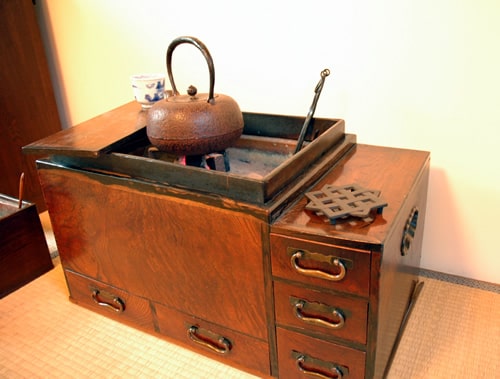
Hibachis or charcoal braziers used to be the center piece for many traditional Japanese rooms in winter until a few decades ago. Used mainly for warmth, they were also used to heat water for tea or sake warming, and also to heat or cheer people sitting nearby. Hibachis are either made of glazed clay (usually the height of a normal Japanese table, and decorated in pleasing ways), or of wood, lined with metal (generally fitted with little drawers for tobacco, eyeglasses, paper, and other things used by the head of the household).
Edo-period naga-hibachi, essentially a copper-lined, rectangular wooden chest, are probably the most prized hibachi style. They are still quite easy to find in antique shops. Naga-hibachi were often common to the front room of homes that doubled as shops. The place before the drawers was reserved for the father, since from this position he could receive guests or customers and have his necessary sundries at hand. (Smaller, more portable ceramic hibachis were generally used in other rooms.) There are two naga-hibachi styles: 1) The daiwa-hibachi, which has a thick extended wooden lip around the top, common to the Kyoto-Osaka area; 2) The Edo-hibachi, with sides extending straight down, used in the Edo (Tokyo) region.
Today, hibachis are popular among nearly everyone interested in Japanese antiques. The wooden ones make handsome side tables, and the porcelain hibachis serve perfectly as planters for perhaps one of your bamboo plants. And in winter, hot water and heated snacks are something to look forward when the cold is just too much!
- Japan winter (Dec-Feb) travel food highlights
- Japan December travel tree and flower highlights
- Japan December travel festival | event highlights
- Ringing out the Old Year with bonsho bells
- Hibachi: Traditional warming Japanese charcoal braziers
- Millennium Interview: Head priestess of Kurama-dera Temple
Millennium Interview: Head priestess of Kurama-dera Temple
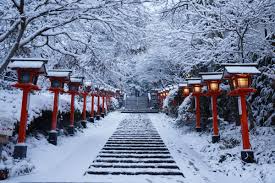
This special interview was conducted in November of 1999 at Kurama Temple. [I, Ian Martin Ropke, lived in Kurama for many years and felt especially privileged to have a chance to speak with this very special Buddhist nun.]
YJPT: How did you become the head priestess at this temple?
Shigaraki: I was born and raised in Kyoto. After finishing school, I began to live in this temple, where my father was the head priest. Even though he was my father, I learned from him as his disciple. I never imagined that I would succeed him. But I believe, now, that this was my destiny.
YJPT: What is the guardian deity of Kurama-dera Temple.
Shigaraki: We worship several Buddhist incarnations and Kannon (The Goddess of Mercy) in the temple, but what we actually believe in, and respect is formless. We call it Sonten, which means the living natural world and the forces of the cosmos. Many people who climb Mount Kurama are purified by this spirit. It gives people life energy. Nowadays, many people think a temple is for special situations like funerals. This temple is different. Kurama Temple is here to protect the living world and purify the spirit of people’s souls.
In Japan there are many Buddhist sects and all kinds of teachings. Kurama-dera does not belong to a specific sect. Regardless of different sects and even different religions, Kurama-dera exists for people hoping for happiness in life. Naturally, everyone is hoping to achieve a state of love, light and power. The top of a mountain, real or imaginary, is a peaceful place, and to get there you can choose from an infinite number of paths. It does not matter which road you choose. All the paths lead to the same place. For this reason, sects are meaningless.
YJPT: This temple is very popular with all kinds of people, especially at full moon. Why is that?
Shigaraki: Some people who visit this temple, say that UFOs come to this mountain. According to legend, a deity from Venus came here 7 million years ago, to help the people of the world. So, we sometimes say that the energy of this temple comes from Venus. It is just an energy or a spiritual level of intensity, but many people make the mistake of thinking it is connected with UFOs.
We have a special full moon festival here every May called the Uesaku Festival. The only one of its kind in Japan, it is related to full moon festivals common to the Himalayas, in which people meditate under the full moon light, and chant special sutras. As part of our festival, we invite monks from Sri Lanka, where we have been doing charity work for more than 10 years. Our festival has become very popular. And year by year, the number of participants has increased. In 1999, we had 700 people for the early evening program and more than 500 people for each of the two late night programs.
YJPT: As we prepare to enter a new millennium, what are your feelings about Japanese society and people in 20th century?
Shigaraki: I think the ancient tradition and Japanese spirit still exists deep within the hearts of Japan's people. But it is asleep. Human beings are weak. And when it comes to choices, people often choose the easy way and not the right way. Because of this, the heart tends to feel alone. And when you feel alone, you will eventually become very lonely. People think that they live by their own power. But this is not true.
We live because the spiritual forces of the cosmos have given us this life. For this we can only be grateful.
Temples and shrines used to be set in natural surroundings. And people could go there to connect with nature. However, in this century, nature has gradually faded away from our spiritual centers, especially in the city. People in big cities are too far away from nature. People must maintain a connection with nature in their lives. I try to explain this to our visitors here at the temple.
I have lived most of my life in the center of this silent and spiritually-alive mountain world. Most people are living in a material world, with things and not spirit at the center of their lives. People rely on the material world too much, and neglect to look within their hearts and minds. Unfortunately, even though we have had material possessions since the beginning, people continue to think that to have a lot of material possessions is the answer to everything. Of course, things can never answer any of our deeper needs.
The most important things we feel or understand in life are always beyond words. We feel the great things. We sense them with our intuition. That power rests at our center and directly connects us to everything. Experiencing nature is also beyond words. It is an experience that requires no instruction. It occurs naturally and, in the end, always on a very deep level. Kurama-dera offers an excellent opportunity for people to come to some kind of spiritual balance through the fresh, grand fragrance of nature, through the beauty of perfect trees and flowers, by touching the endless fabric of life, and by being touched by the spirit of something much higher and much finer than we normally experience in our daily life.
YJPT: What are your feelings about the future of Japanese society and her people?
Shigaraki: Nowadays, many Japanese people travel to other countries. Travel can lead to a kind of cultural and spiritual awakening because it gives people the opportunity to see that human beings, no matter where, are blessed by the same love and spirit. Travel leads to a calm mind and respect for different cultures, traditions and ideas. Like any personal experience, travel can lead us to see that all is one, and that a single great natural force exists wherever we go. This cosmic force gives us all the chance to live. We all share the same air, the same ocean, and the same land, and I believe very strongly that we are supported by the same power.
YJPT: What are your feelings about young people today and from generations past?
Shigaraki: We were very poor when I was a child. We were often hungry. And through the difficulty of our situation, we learned many important things. Unfortunately, today's young people have fewer opportunities to learn the important lessons of life early. These kinds of things cannot be learned through the television. People must experience personal difficulty and failure in order to grow personally and spiritually. Culture is not learned. It is absorbed through daily life. I believe that young people's hearts are as pure as ever. You cannot blame them for who they are. In generations past, society was quite different. However, I believe young people’s minds and hearts are always the same. We are always looking for the same things inside. I believe they have the same potential as every other generation. It is inside and it is waiting to take flower. But for wisdom and great love to germinate there must be real experience.
YJPT: Do you often leave this temple and go to other places? What are your favorite places in Kyoto?
Shigaraki: I like to be here, where nature is strong and plentiful. But sometimes I like to visit art museums to see and feel the beauty of art. It is a language my heart understands. But this place is still the best.
YJPT: Do you have a message for the 21st century?
Shigaraki: I always wish for the same thing. I always wish that human beings and nature will be blessed with the love and infinite energy of the cosmic powers [Sonten]. I believe in the duty of each person to live correctly. We exist together, and we must respect each other and other forms of life. Even a small effort can lead to great consequences. Prayer is a movement of the soul. Hoping is a wish of the heart. We must remember to look inside the heart and the soul. This is where all answers lie, not outside. If we look inside, people will become a brighter source of light. That is what I pray for.